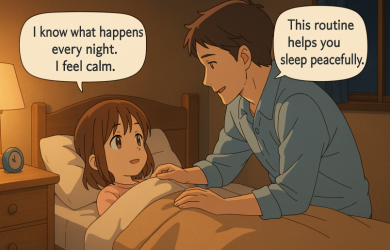What is Attachment Theory? History & Theories Explained

Unlock Daily 30-Sec Tips for a Happier Relationship
👉 Subscribe FREEKey Takeaways
Marriage.com AI Quick Summary
While growing up, not everyone had the same quality of relationships with their parents/caregivers. Some children felt safe, loved, and cared for by their parents, while others did not have the luxury of having someone who offered the needed quality of parental support.
Therefore, when they become adults, it affects their relationships with other people- including romantic relationships.
In this article, you will learn about attachment theory. This theory is one of the most common studies showing how the relationship between children and their primary caregiver shapes their relationships with others when they become adults.
Related Reading: Tips On Balancing Parenting & Marriage
What is attachment theory?
The attachment theory is a psychological study that was first developed by the foremost British psychologist, John Bowlby.
It focuses on the relationships between children and their parents and how children respond when separated from their primary caregivers. In addition, this study tried to interpret the anxiety and distress children experience after their separation and the effects that came with it.
After the study, the attachment theory concluded that children need a solid emotional bond with their parents or caregivers to ensure healthy development.
Therefore, if there are obstacles in the way of creating this emotional bond, it can affect the child’s perspective of relationships as they become adults.
Chris Fraley’s study titled on attachment theory is an eye-opener to understanding more about this psychological concept and its implications on relationships.
How do attachment styles affect romantic relationships
Not all romantic relationships can pan out the same way due to the different existing attachment styles. For example, people with secure attachments are satisfied with their partners and feel safe, loved, and connected.
On the other hand, individuals with an anxious attachment style are quite clingy and insecure. Some of their inactions can discourage their partner.
Those with avoidant attachment tend to feel independent without needing their partner’s emotional support. The disorganized attachment style is characterized by craving emotional bonds and not wanting them simultaneously. Such individuals tend to be indecisive about what they want in a relationship.
Bowlby and Ainsworth’s attachment theory explained
What is attachment theory? And who discussed it for the first time?
John Bowlby was a British Psychologist who happened to discuss the first attachment theory. His theory explained attachment as a continuous psychological connection between humans.
Bowlby’s theory was developed to explain how the bonds between caregivers and infants are created. One of the important takeaways of his study was that the bonds between infants and their caregivers have a big impact that will continue throughout their lives.
Bowlby’s attachment theory in relationships identified four stages where children become attached to their parents or caregivers.
Stage 1: Birth to 3 months
From conception, most infants prefer to look at some faces and listen to some voices. During this period, they respond to people but cannot recognize one from the other. As they grow older, they begin to smile at faces, which suggests that the caregiver will reciprocate, thereby strengthening the attachment.
Stage 2: 3 to 6 months
In this phase, infants begin to show their preference for people they like. They will smile and giggle at familiar people but stare at strangers. When they are in discomfort, only their preferred people will be able to cheer them up.
Stage 3: 6 months to 3 years
At this point, the baby’s preference for a particular person becomes more profound. They experience separation anxiety when the person is unavailable. When they begin to crawl, they can follow this special person anywhere.
Stage 4: 3 years to the end of childhood
Bowlby concluded that children at this age begin to notice that their caregivers have personal responsibilities. So, they show less anxiety or concern when their favorites are not around for some time.
Mary Ainsworth was another key scientist who further expounded the attachment theory. She was Bowlby’s research assistant and was responsible for developing the “Strange Situation.”
From her observations of the Strange Situations, Ainsworth and her colleagues identified three attachment styles: Secure, anxious, and avoidant. Later, a fourth attachment style, disorganized attachment, was added.
To learn more about Ainsworth’s attachment theory, check out Susanne Jones’s study, which has advanced this theory by studying it in relation to communication, interpersonal relationships, etc.
4 different attachment styles
Attachment styles are depicted by the various ways of interacting in familial and romantic relationships. In familial relationships, attachment styles show how parents interact with their children and vice-versa. While in romantic relationships shows how partners interact with each other.
Today, there are four attachment styles, namely: secure attachment type, anxious attachment type, avoidant attachment type, and fearful-avoidant type.
1. Secure attachment
The secure attachment style is the ability to form a caring, loving, and secure relationship with other people. A securely attached individual can love others and be loved too. They can also trust and be trusted.
According to the secure attachment theory, such people are not afraid when people or their partners are not in the same space. Therefore, they can be independent and also dependent at the same time without crossing boundaries.
Additionally, one of the characteristics of the secure attachment style is the ability to have honest and open communications at the right time. Also, another trait is self-regulating emotions through healthy coping skills.
Finally, people with a secure attachment style can end relationships at the right time.
2. Anxious attachment
Someone with an anxious attachment style will find it difficult to feel safe in a relationship, often because of how they were brought up or past events. For example, a person with this attachment style probably has absent, overbearing parents and is inconsistent with their roles.
As they age, they begin to show fears of rejection or abandonment in their friendships and relationships. For people in romantic relationships, they will be dependent on their spouses for their approval and needs.
One of the ways to identify someone with this attachment style is their low self-esteem and clinginess. They will also struggle to maintain healthy boundaries because they don’t know what they mean.
3. Avoidant attachment
Anyone with an avoidant attachment style might not find it easy to make healthy relationships. People whose parents were withdrawn or neglected are likely to have this attachment style. Therefore, such people might rarely request help or express emotions and feelings.
So, they might not connect emotionally to their partner- both consciously and unconsciously. If they are going through difficult times, they prefer to handle it themselves instead of reaching out to people. They will prefer to prioritize their independence instead of partnering with people.
4. Fearful avoidant type
The fearful-avoidant type is also known as the disorganized attachment style. This is a merger of the anxious and avoidant attachment types. Someone with this attachment style can desire affection, and they might also frown at it.
Also, they may want a romantic partner to love and care for them, and at the same time, they might be reluctant to get into one. If anyone has this attachment style, the cause can be traced to having non-existent, troubled, and unreliable parents.
One of the common traits of the fearful-avoidant type is their relationships are always disorganized and chaotic. While they crave closeness with people, they also push them away.
Ainsworth’s strange situation
Ainsworth’s strange situation is a standardized attachment style procedure developed by Mary Ainsworth.
This study, also called the Strange Situation Classification (SSC), was developed to observe the connection between children using different caregivers. In addition, the results of this study were to show the varying levels and different types of attachment in children.
Mary Ainsworth and her colleagues, mostly Developmental psychologists, carried out this attachment psychology test in a laboratory. The people used in this test were mothers and a baby. Here is a breakdown of how each episode ensued.
1st episode: The mother and baby enter the room
2nd episode: Only the mother and the baby are alone in the room, and the baby is encouraged to explore the room without restrictions
3rd episode: A stranger enters the room and discusses with the mother. The stranger also tries to have a brief interaction with the baby. The mother leaves the room after some minutes
4th episode: The stranger, who is now in the room with the baby, tries to keep the child company.
5th episode: The mother enters the room and waits for the child to receive them at the doorway. The stranger leaves at this point.
6th episode: The mother leaves the room the second time, and the baby is left alone for a few minutes
7th episode: The stranger enters the room, stays, and interacts with the baby
8th episode: The mother enters the room for the last time, and the stranger leaves.
From this study, four patterns of attachment were discovered. The first was known as Secure (B).
A child with a secure attachment style will engage the stranger in their caregiver’s presence. When their caregiver leaves, they might be sad but become happy upon their return. The child feels safe and confident that their caregiver’s presence solves their needs.
The second pattern is the anxious-avoidant, insecure (A). Any child with this attachment pattern will care less if their caregiver leaves or returns, and the same applies to the stranger.
The third pattern from this study is the anxious-ambivalent/resistant, insecure (C). Children with this pattern were unhappy before the separation, and it wasn’t easy to comfort them when their caregiver returned.
The last pattern was discovered much later by Mary Main, who happened to be Ainsworth’s graduate student. This attachment style was characterized by different situational behaviors typical of the first three classifications.
Maternal deprivation theory
The term “Maternal Deprivation” was coined by John Bowlby, a renowned psychiatrist and psychoanalyst. Maternal deprivation was used to show the effects of separating young children or infants from their mothers or a close substitute.
Bowlby maintained that if the attachment between the caregiver and the infant is regularly disrupted, it can cause long-term negative effects on the child. These effects might be emotional, social, and sometimes cognitive.
One of the main points of this theory, which also doubles as the Bowlby attachment theory, is that attachment is essential for an infant’s survival.
Even though Bowlby didn’t consider that there would be other attachment individuals for the child, he opined that the primary bond should be between the child and their mother.
He believed this attachment had more quality importance than subsequent ones formed from other relationships.
Another point of this attachment theory psychology is that children should receive non-stop care from the primary attachment figure, who happened to the mother. This continuous care was expected to run for the first two years of the child’s life.
Bowlby postulated that if the child doesn’t receive the needed care during this period, the effects of this maternal deprivation might be brutal and irreversible.
Bowlby believed maternal deprivation could reduce the child’s intelligence and make them more delinquent. He also claimed that the child could become more susceptible to depression because of the disruption between the child and their primary caregiver- the mother.
Attachment styles in adult relationships
According to different studies on attachment theory, attachment styles tend to develop at the early stage in life, and they mostly remain the same over time. However, this doesn’t exclude the fact that some people with certain attachment styles can transition into others deliberately or through certain life situations.
Regarding attachment theory in adults, it is important to note that how you relate in your relationship has a big connection with your attachment style.
-
Close relationships
For close relationships like friendships and acquaintances, someone with a secure attachment style will easily make friends and nurture them the right way. Moreover, they understand the boundaries of such relationships and are mostly not offended when their friends cancel on them.
If you feel anxious when you don’t hear from your friend, or you’re pained if they cancel an appointment, you most likely have the anxious attachment style.
People with avoidant attachment find it hard to be close to people because they cannot afford to be vulnerable. It makes them uncomfortable.
Lastly, the fearful-avoidant attachment individual craves intimate friendships, but they get detached because they are afraid of getting hurt.
-
Parenting
Regarding parenting, securely attached kids often feel safe, confident, and loved by their caregivers. If they are separated from their caregivers, they experience genuine sadness, but on their return, they are joyful.
Generally, children with a secure attachment style have higher esteem than their counterparts. However, for the anxious attachment style, such children are not sure what to expect concerning their caregiver’s presence.
Hence, they always experience anxiety and are unsure about other people’s intent on getting close to them. In avoidant attachment, the parents are not emotionally available and can be angry with their children.
Such children see people as unfriendly, cold, or sometimes manipulative. Therefore, they keep an emotional distance so they don’t get hurt.
The fearful-avoidant attachment begins when the child is always afraid or threatened by their parent’s presence. Such children grow up to be adults with unexplainable trauma and disorganized relationships.
Related Reading: Tips On Balancing Parenting & Marriage
-
Love
According to the attachment definition, adults with a secure attachment style express their emotions without holding back. They can be independent and dependent, and their partners can always rely on them. Such relationships are built on love, honesty, and emotional proximity.
Concerning the anxious attachment style, people wired like this often seek their partner’s support and approval. Even though they value their partner and the relationship, they often worry that their partners are not as committed as they are.
People with the avoidant attachment style are mostly independent, strong-willed, and lone rangers. Such people believe that their relationship is just one of the aspects of their lives. They avoid depending on their partner and are good at hiding their feelings.
Lastly, fearful-avoidant people have issues depending on their partner. They do not want to get too emotionally invested in avoiding getting hurt.
Related Reading: What is Love?
-
Divorce
People with a secure attachment style can have fulfilling relationships, but they can experience heartbreaks too. However, when they do, they are confident they can move on from the divorce and find another union that meets their purpose.
Individuals with an anxious attachment style might find it difficult to move on because of relationship attachment issues. They have been used to their partner’s validation and constant reassurance, which is now missing in their new lives.
Those with the avoidant attachment style might disconnect from the rest of the world when they divorce. They will avoid their ex-partner to reduce the effect of emotional stress.
Similarly, people with the fearful avoidant attachment style try to shy away from everything related to their ex-partner while focusing on other aspects of their lives. They want to move on, but they also consider returning to their ex-partner.
Related Reading: 10 Most Common Reasons for Divorce
Watch this video to know how to get over a divorce:
Conclusion
After going through all the attachment theories, it is important to know your attachment style, to help you navigate all forms of relationships. Be assured that if you have any attachment style apart from the secure one, you can still get better and even transition if you have the right help.
Also, if you have difficulty understanding your attachment style and how to make your relationships work, consider seeing a counselor or taking a relationship course.
If you want to find and keep love irrespective of your attachment style, check out Amir Levine’s book Attached. This book explores the new science of adult attachment and how it can help you safeguard your relationships.
 Tips
Tips
Write your tip or submit a video tip
All tips are reviewed before the publishing.
Share this article on
Want to have a happier, healthier marriage?
If you feel disconnected or frustrated about the state of your marriage but want to avoid separation and/or divorce, the marriage.com course meant for married couples is an excellent resource to help you overcome the most challenging aspects of being married.
Recent Articles
Related Quizzes
Unlock Daily 30-Sec Tips for a Happier, Healthier Relationship
👉 Subscribe FREE on YouTube We'd love your feedback!
We'd love your feedback!
 Expert Q&A
Expert Q&A
Ask your question related to this topic & get the support you deserve from experts.



















 Thanks for your feedback!
Thanks for your feedback!